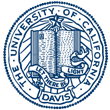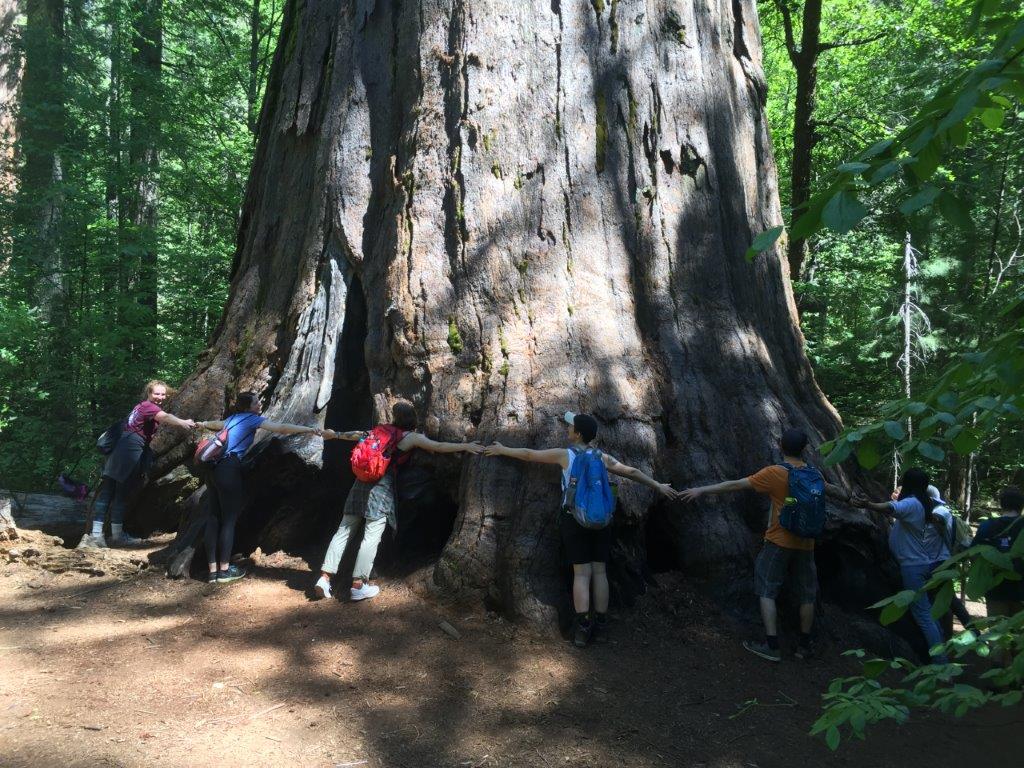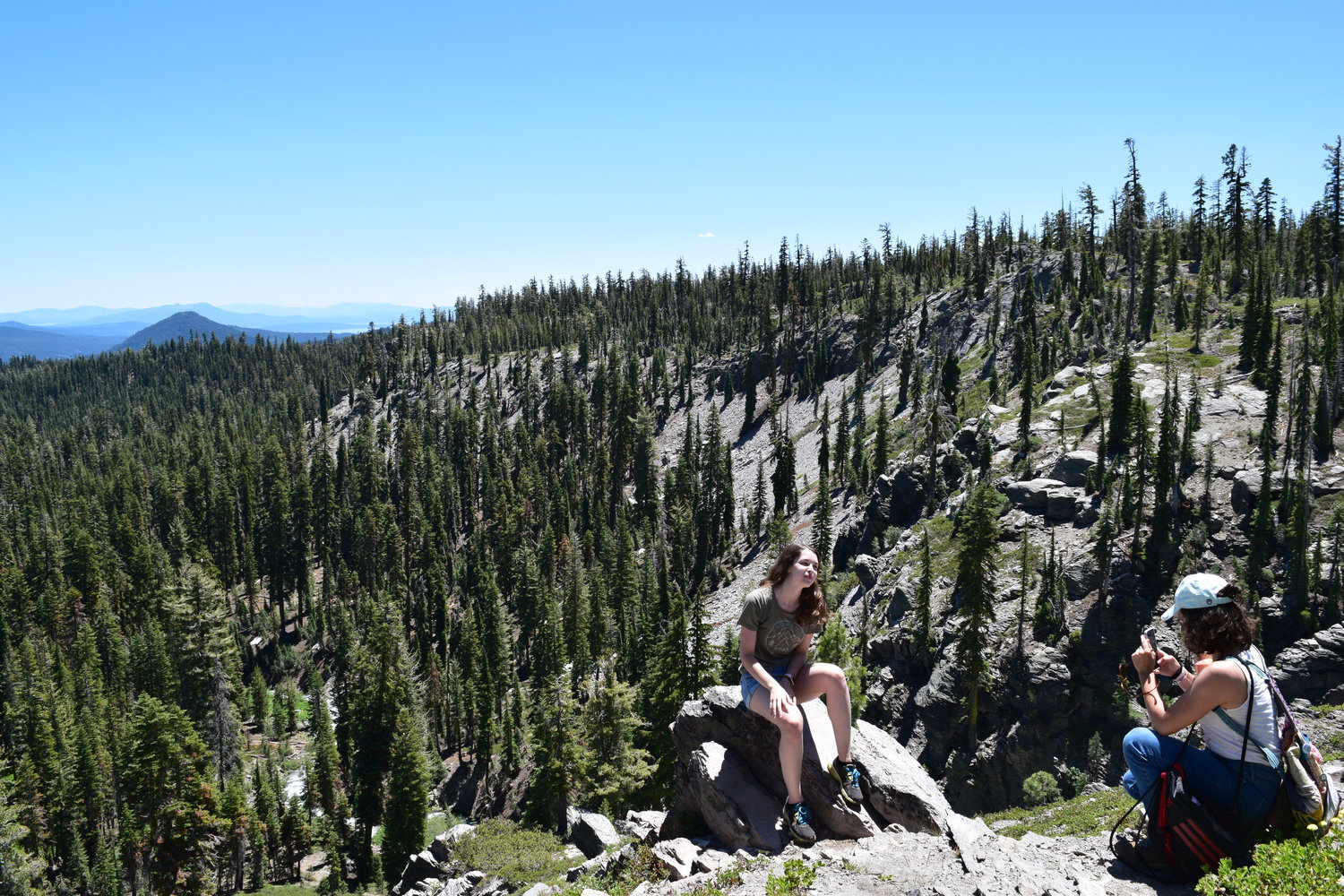
This REU program was funded through NSF PHY-1852581.
Calaveras Big Trees State Park
On our first weekend, we headed up to Calaveras Big Trees State Park, a little more than a two-hour drive from Davis in the foothills of the Sierras. This park houses some of the largest trees in the world, the giant Sequoias. In the morning we toured the north grove and saw the visitor center. Afterwards we headed to the less trodden south grove for a picnic near Beaver Creek, followed by a longer 5 mile hike to see the majestic trees, some of which have diameters in excess of 25 feet and reach up to 300 feet high. We headed home mid-afternoon after a well-deserved break to cool off in the creek.


McClellan Nuclear Research Center
The following week we spent an afternoon in Sacramento at a nuclear reactor center operated by UC Davis. Originally installed for the US Air Force, the reactor is now used for a wide range of research, ranging from neutron radiography to image large complex assemblies, neutron activation and radiation studies, isotope production, and even mutagenesis studies of plant seeds. The facility is located about half an hour from the main campus.
Lick Observatory
About half-way through the program we took a Saturday to visit the Lick Observatory, located at the peak of Mt. Hamilton just east of San Jose. We left mid-afternoon and arrived around 5pm after following the winding road to the top. We had a picnic dinner, followed by a comprehensive tour of the facility led by Rod Norden and Thomas Kelley. We toured the great Lick refractor, saw the automatic planet finder, and went inside the dome of the three-meter Shane telescope to chat with some of the observers planning for their upcoming session that evening. (Below, Shane's dome open for tests before the evening's measurements.) We enjoyed watching the sun set over the bay area, and then headed inside the visitor center for hot chocolate, to learn how James Lick brought the telescope to the mountain top in the late 1800's, and about how adaptive optics works. Once the sky was dark enough, Rod and Thomas focused the original refractor telescope on several astronomical objects for us. Driving down the mountain late that night afforded several views of wildlife, and we returned home around 3am.


Lassen Volcanic National Park
In late July we headed up north to visit one of the geological gems of California. After packing the vans with our gear and driving up, we stopped by Sulphur Works to view the steam rising from the boiling mud pits, and then hiked to King's Creek Falls. (Below left, pausing for pictures along the trail.) Many were impressed to see snow here during the height of summer! After stopping by the visitor center to admire the views from Manzanita lake, we headed towards Butte Lake at the east end of the park. Along the drive, we paused to walk through the Subway Cave lava tube. Several students enjoyed swimming in Butte Lake before dinner, and then after dark we watched for meteor showers before the moonrise. In early morning, we trekked up the nearby Cinder Cone extinct volcano and viewed the painted lava beds extending for miles around. After returning to camp and packing up, we headed about an hour north to the famous McArthur-Burney falls (below right), dramatic because water emerges from many openings in a wall of porous volcanic rock. After a picnic lunch we headed back home to Davis.


Lawrence Livermore National Laboratory
Our final field trip was a day trip to tour LLNL, about two hours from Davis. Tammy Ma and Joanna Albala hosted us, and we had a tour of the National Ignition Facility as well as the bioengineering facility. We had lunch and a panel discussion with several young staff members who shared their experiences of graduate school and offered career advice.